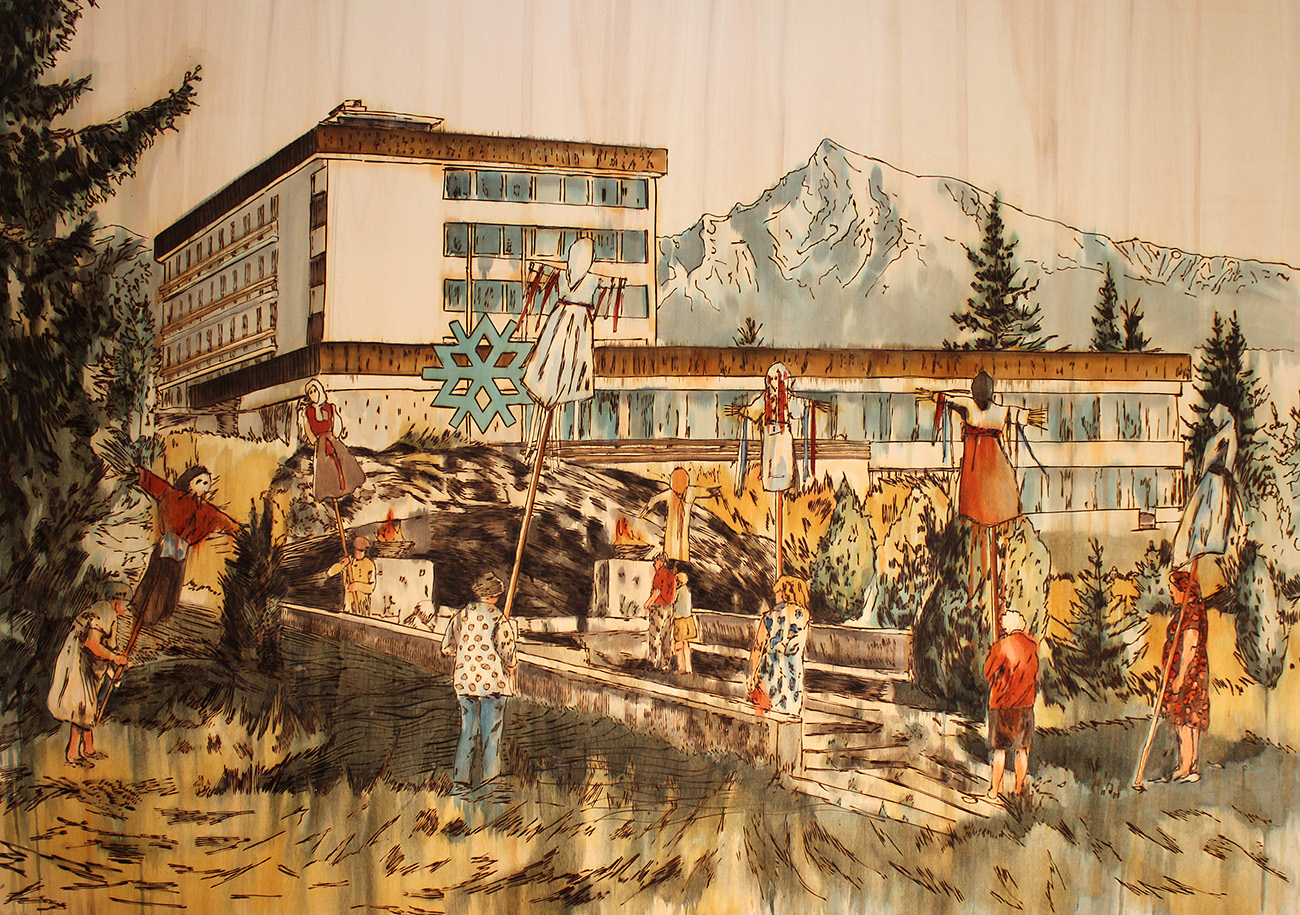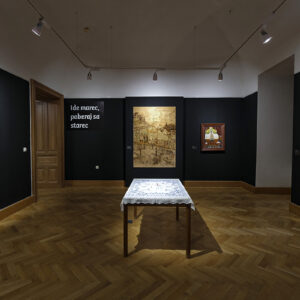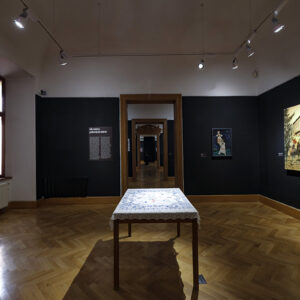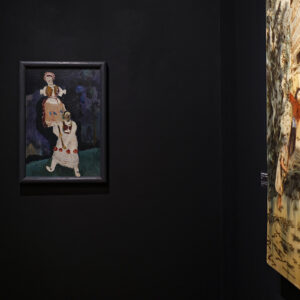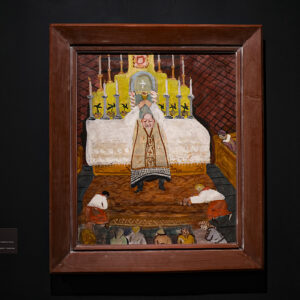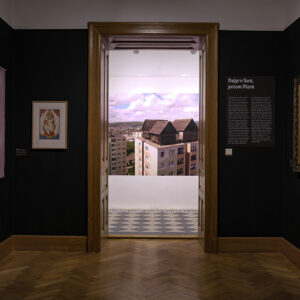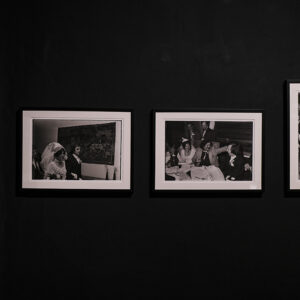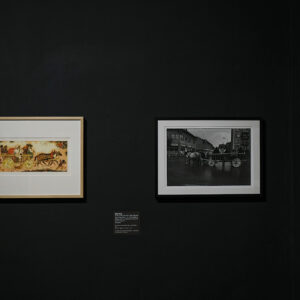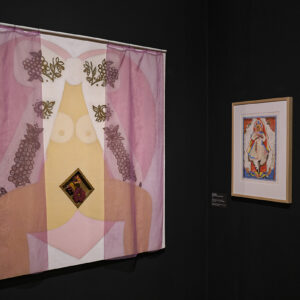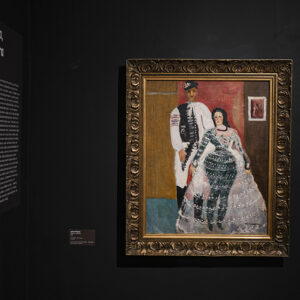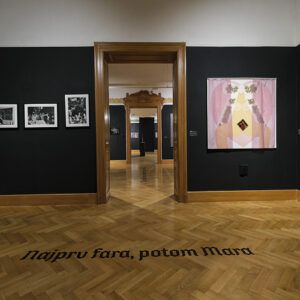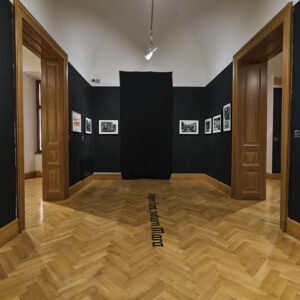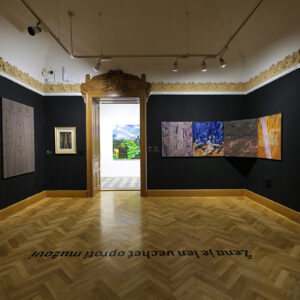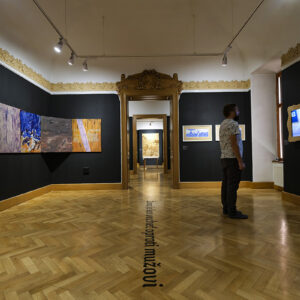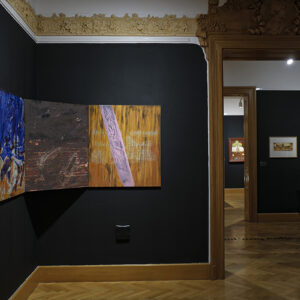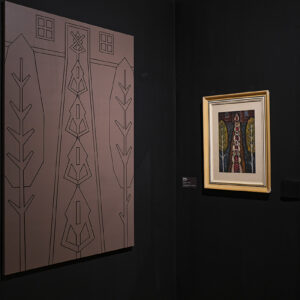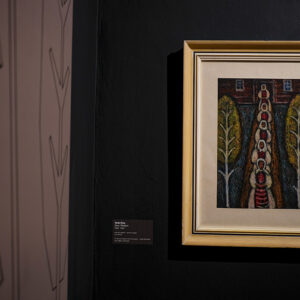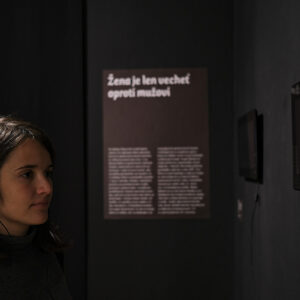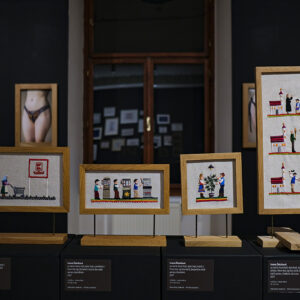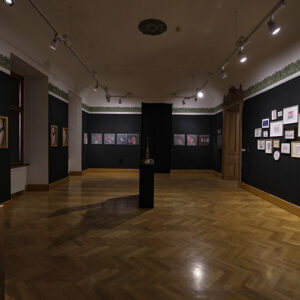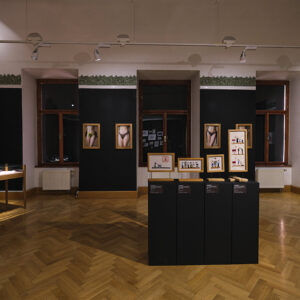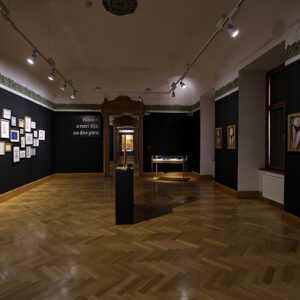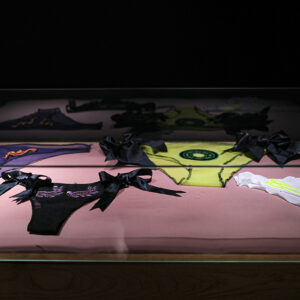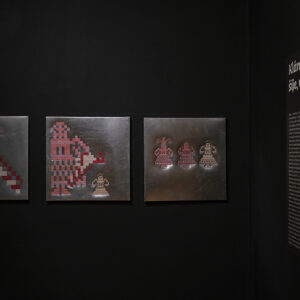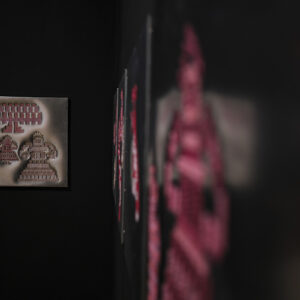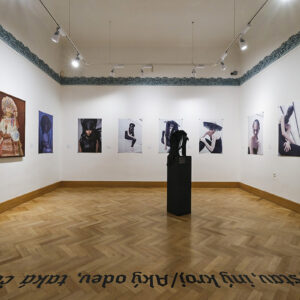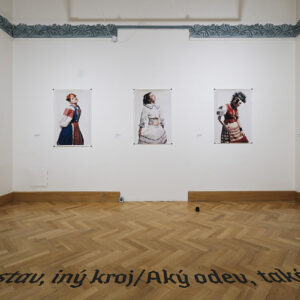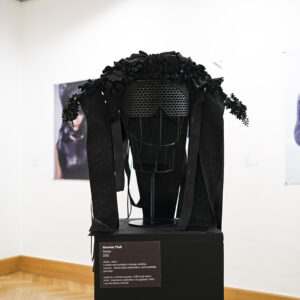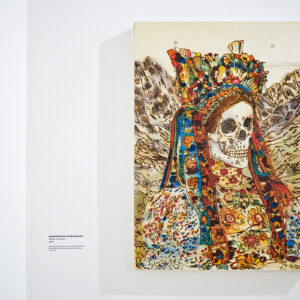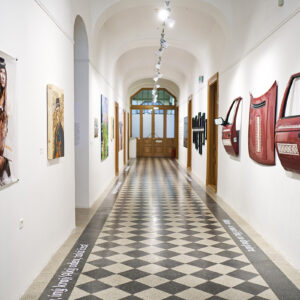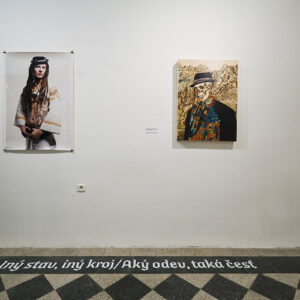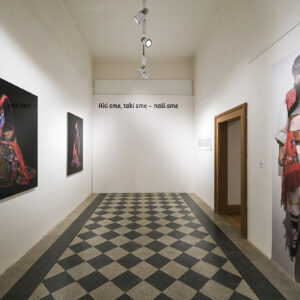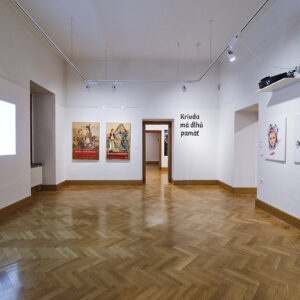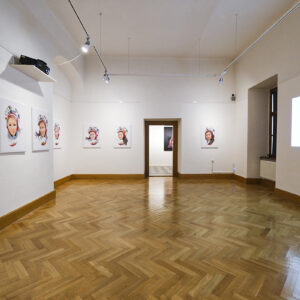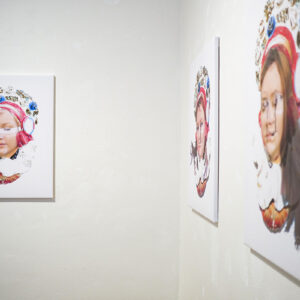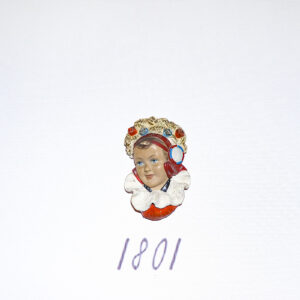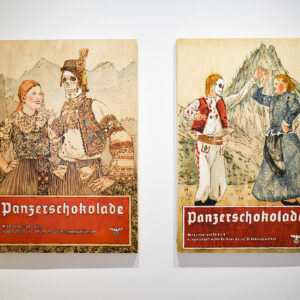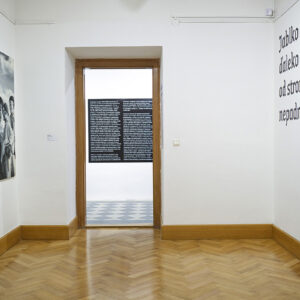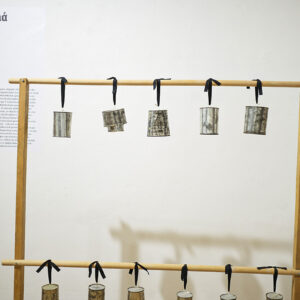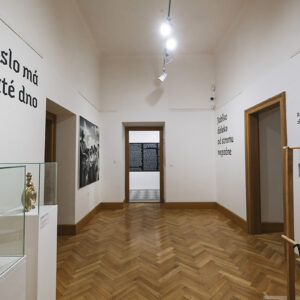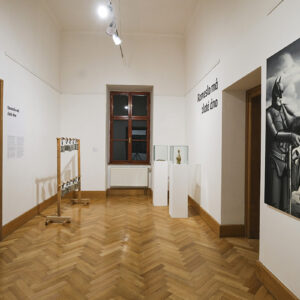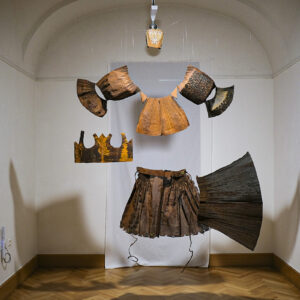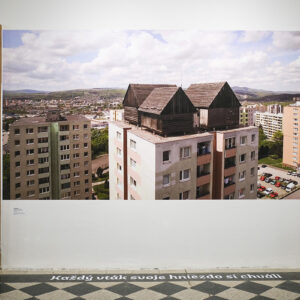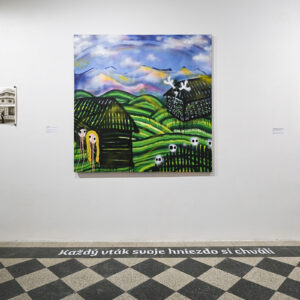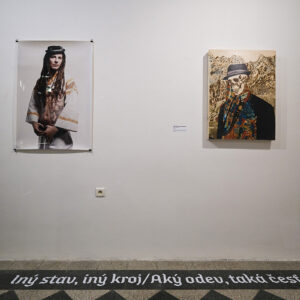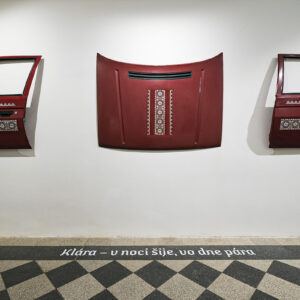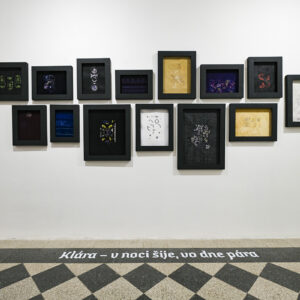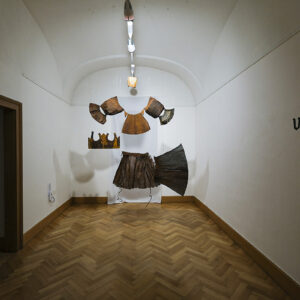Information
Artists
Ľubomíra Abrahámová, Milan Adamčiak, Janko Alexy, Mária Balážová, Robert Bielik, Erik Binder, Klára Bočkayová, Tomáš Džadoň, Richard Fajnor, Eva Filová, Ľudovít Fulla, Jan Hála, Zuzana Jablonovská Hečková, Anetta Mona Chişa &Lucia Tkáčová, Tomáš Klepoch, Július Koller, Kundy Crew, Cyprián Majerník, Erika Mészárosová, Jarmila Mitríková & David Demjanovič, Alex Mlynárčik, Emília Rigová, Ivana Sláviková, Ivana Šáteková, Henrieta Tholt, Miloš Vančo, Jana Želibská, Anabela Sládek Žilíková
Curator
Barbora Kurek Geržová
Venue
Representative Halls
Duration
October 1 – December 5, 2021
Download
Support
With financial support of the Slovak Arts Council public funds. The Council is the leading partner of the project.
The main objective of the FOLK-LORE exhibition is to map and critically reevaluate, with regard to the present day, various representative pieces by both male and female artists of the 20th and 21st centuries who reflect upon the specific phenomenon of folklore which has had a rather large impact on the development of our culture. From both ethnographic and historical points of view, it is a part of Slovak identity and it is most commonly affiliated with life in the countryside, folk traditions, customs, proverbs and sayings. However, the focus of the exhibition is not embrace these traditional values, but offer a different perception of folklore. It will take a critical look at folk traditions and their reflection in broader historical and social contexts, as suggested by the exhibition’s tittle – FOLK-LORE. It is based on the word folklore, which was first used by British writer and antiquary William Thoms in 1846, but it is purposefully divided into two parts. It insinuates the exhibition will present pieces that will de(con)struct the phenomenon in order to emphasise that our interpretation of folklore is a never-ending process that changes with the time. Their scope covers a whole spectrum of approaches, from admiration and respect for folk culture in the process of national emancipation to the ideology of the military Slovak State whose cultural policy used folk traditions to compose a fake national myth and cover up their racial policy toward minorities.
One of the key aspects the exhibition tries to emphasise is the rarely reflected fact that the portrayed traditional countryside lifestyle was based on a patriarchal society where women were in a subordinate position, controlled and often humiliated, physical violence including, which is also illustrated in proverbs and sayings: “Beating your woman is like plowing your field”, “Woman is like a wood jar, it will dry out unless beaten”, “Money is good when made of paper, woman when beaten”.
The exhibition is divided into ten theme sections which cover different aspects of a given matter in order to create a web of mutually overlapping interpretations and visual levels. The theme sections also present pairs of artworks (Fulla versus Mlynárčik and Želibská, Majerník versus Mitríková and Demjanovič) that represent different stages of historical development and try and confront their often mutually contradicting approaches to selected folk themes. Multiple sections explore critical interpretations of gender stereotypes and gender inequality. They work with several keywords like the bonnet – criticising the stereotypical perception of the status of women; the wedding and its social aspects and transitional rituals, including the social pressure on young girls, urging them to get married as soon as possible; the brideas an object; embroideryused in a subversive way as a means of artistic activism/craftivism. Other theme sections present works reflecting upon ceremonies and rituals of traditional folk culture using irony and satire – a log home as a space for artistic intervention; a concrete apartment building as a new log home; a creative reflection upon the individual, national and ethnic identities; rural equipment as ready made objects with new functions and also a bizarre combination of traditional folk culture with an iconic comic book and film character, Batman. The exhibition will present a wide spectrum of creative approaches, many of which have adopted appropriative methods. The work is thus not created ex nihilo, but it is based on pre-existing images and art forms which reference folklore and folk culture, but also the history of art.
In a broader context, the exhibition reflects upon the contemporary, i.e. new folklore which is based on our return to nature, countryside, simplicity, human contact, a kind of a “humane” approach which is in opposition to the impersonal, busy urban life. The trend is not apparent just in visual arts and visual culture, but also in literature, design and music.
An important goal of the exhibition is to consider the representative pieces by our domestic male and female artists from a broader, generational perspective (as it includes representatives of modernism, late modernism and other styles all the way to the present), including their poetics and techniques, all of which create not just an interesting dialogue, but also a critical discourse reflecting upon the specifics of the individual chapters of the history of art and society.
The exhibition presents pieces from the collections of Nitra Gallery, Slovak National Gallery, the East Slovak Gallery, Bratislava City Gallery, the Town Gallery of Rimavská Sobota, the Art Fond collection – Central European Contemporary Art Fund, private collections and loans from contemporary artist, some of which are presented for the first time.
In cooperation with 3D Real — Virtuálne prehliadky.
